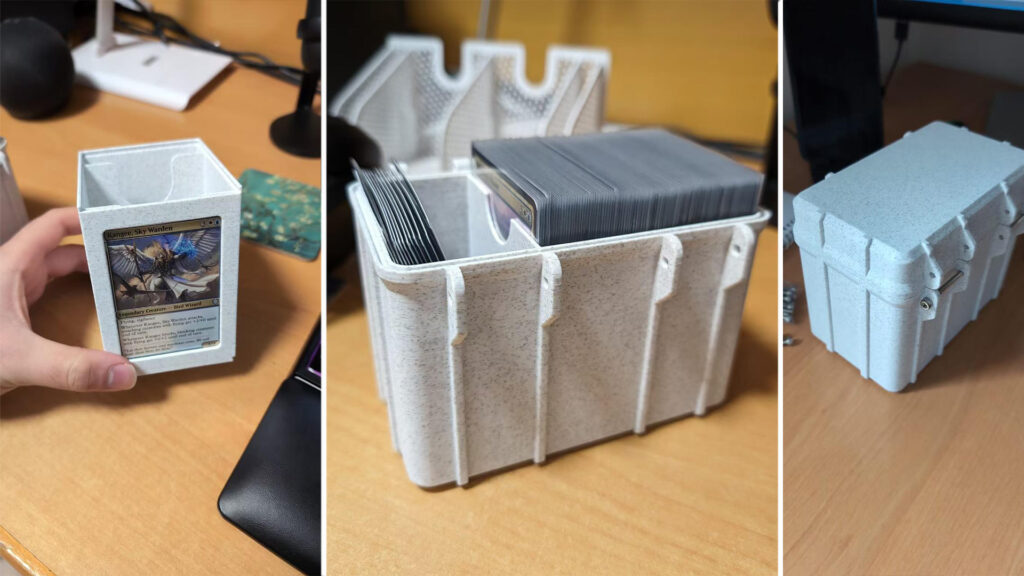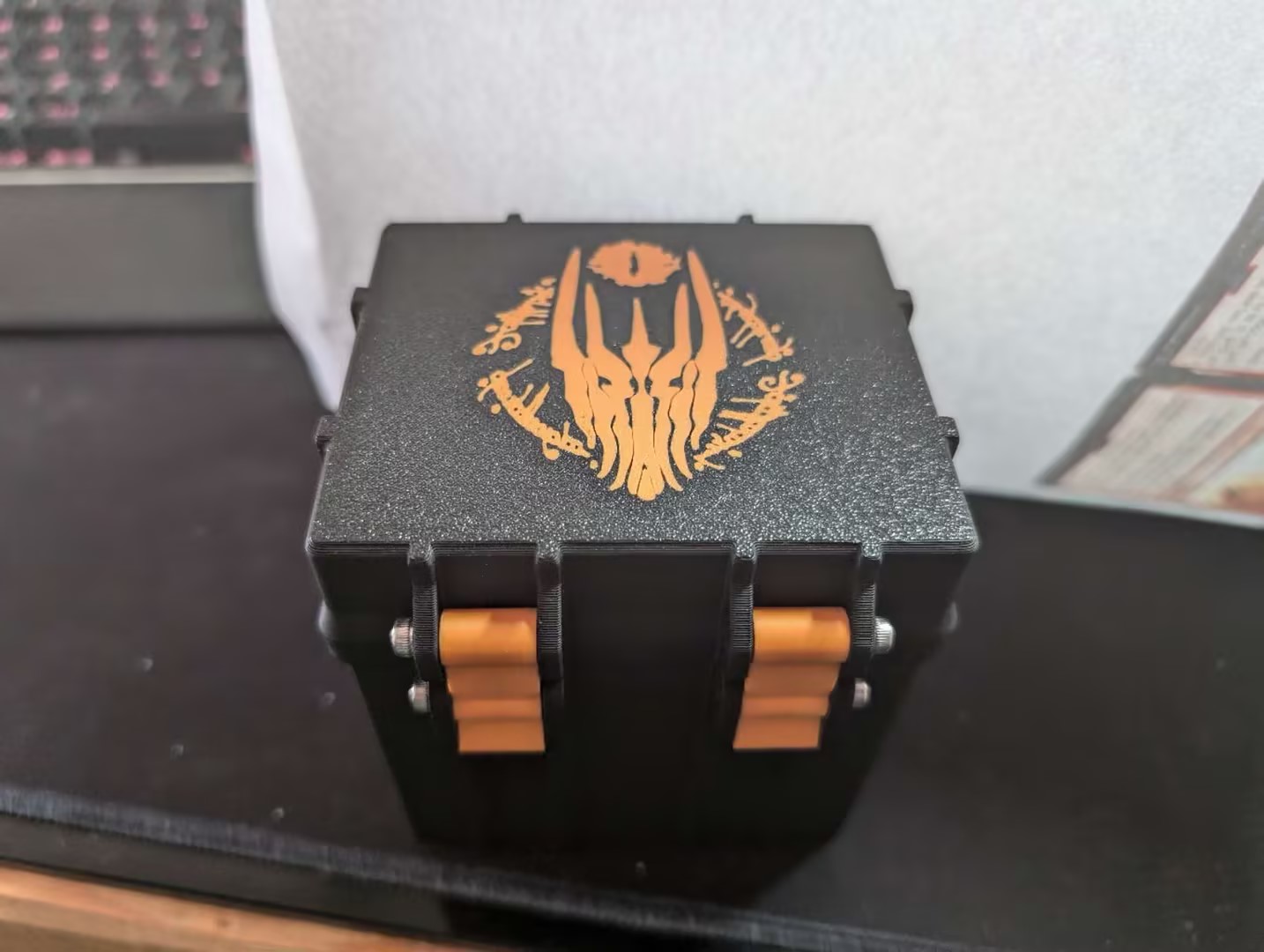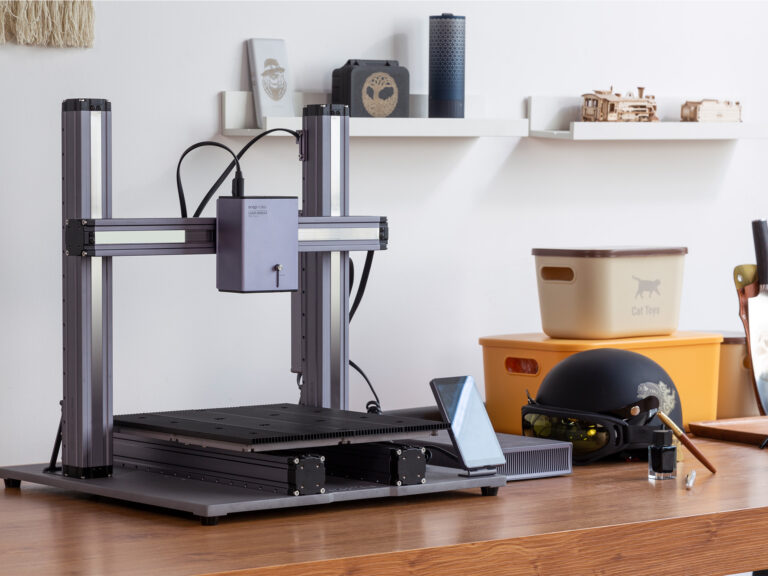3D Printed Deck Box Guide for TCG Players
Have you ever considered having a 3D printed deck box for your commander deck?
Since the launch of Magic: The Gathering in 1993, card trading games have won players worldwide over the past 30 years. These games have undoubtedly unwrapped into the global market. Today, millions gather to compete and collect cards. Every serious TCG player needs a high-quality, durable, functional deck box to store and organize their deck.
The demand for customized deck boxes has grown a lot in recent years. Players want unique designs that match their personalities and gaming needs.
This is where 3D printing comes to the fore. It is simply a revolutionary technology that provides a really affordable way of creative freedom. With a 3D printer, you can create a deck box that works well and perfectly matches your personality and play style.
Best 3D Printing Methods for Custom Deck Boxes
To use 3D technology for printing your own deck box, choose FDM (Fused Deposition Modeling). This method is the best for this purpose. Such printers are apt for beginners as well as hobbyists. They excel at creating sturdy and functional items like deck boxes while keeping costs low.

Several materials work well for deck boxes, each offering unique benefits:
- PLA (Polylactic Acid): Easy to print, biodegradable and cheap. But less durable than others, so it should be just for everyday use.
- PETG (Polyethylene Terephthalate Glycol): It is a strong and flexible material. PETG is also impact-resistant. This makes it a great choice for simple items like deck boxes.
- ABS (Acrylonitrile Butadiene Styrene): resistant to heat and strong- this also draws for very good, long-lasting boxes. However, it needs a heated bed and contains fumes, so a good ventilation system must be created.
Pick the material based on your budget, the complexity of the design, and the durability you need. PETG is an excellent compromise between strength and simplicity for most players when printing.
Best 3D Printer for DIY Deck Box
For crafting high-quality deck boxes, the Snapmaker Artisan is an excellent choice. Its extra-large workspace accommodates even the most intricate designs, while its versatility ensures smooth printing. Whether you’re making a box for a standard deck or a Commander collection, the Snapmaker Artisan delivers precision and reliability.
3D Printed Deck Box Size Calculation
The size of your 3D printed deck box is crucial for a perfect fit. Follow this formula to calculate the inner dimensions:

The Ultimate Formula for Calculating the Inner Diameter of the Card Box
- Inner Width = Card Width + Sleeve Thickness + Buffer Space
- Inner Height = Card Height + Sleeve Thickness + Buffer Space
- Inner Depth = (Card Thickness + Sleeve Thickness) × Number of Cards + Buffer Space
Add a few millimeters of buffer space for easier card handling and organization. Properly calculating these dimensions ensures your box fits snugly while keeping your cards secure.
And don’t forget to keep a small space for your dice box!

Let’s Talk About Card Size (With Sleeves!)
TCG cards usually come in two sizes. The Standard Card Size is 63.5 x 88 mm (2 1/2″ x 3 1/2″); the Japanese Card Size is 59 x 86 mm (2 5/16″ x 3 3/8″).
However, a game designed by Japanese does not mean it uses Japanese card sizes. For example, the Pokémon TCG uses standard card sizes.
The most common TCGs that use standard-size cards:
- Magic: The Gathering:
- Pokémon TCG
- Flesh and Blood
- Final Fantasy TCG
- Lorcana
- One Piece TCG

The most popular games that fit Japanese-size sleeves are:
- Yu-Gi-Oh!
- Cardfight!!
Remember that many players use outer sleeves for extra protection, slightly increasing the dimensions. Here’s a quick reference chart:
Card Size Chart (with and without sleeves)
| Standard Card Size: | Japanese Card Size | |
| With sleeves | 66 x 92 mm (2 5/8″ x 3 21/32″) | 61 x 88mm (2 13/32″ x 3 1/2″ ) |
| With outer sleeves | 68.5 x 94 mm (2 5/7″ x 3 13/16″) | 66 x 92 mm (2 5/8″ x 3 21/32″) |
The standard card size is slightly bigger than the Japanese size. Choosing the right card size is the most important step in designing a 3D printed deck box. In addition, you also need to determine the thickness of your deck.
How Thick Is Your Deck? (for Inner Depth!)
To calculate your deck’s thickness, consider:
- Card Thickness: Most cards are 22–30 pt thick, with slightly thick foil cards.
- Sleeve Thickness:
- Inner sleeves: ~50 microns
- Regular sleeves: ~120 microns
- Outer sleeves: ~120 microns
Use these measurements to estimate your deck’s total thickness and design accordingly.

The final thickness of a sleeved card can vary slightly due to trapped air. Approximate values for reference:
- A single-layered card sleeve has an approximate thickness of 0.52 mm (0.02 inches).
- Cards with double-layer sleeves have a thickness of about 0.62 mm (0.024 inches).
- Cards with triple-layer sleeves have a thickness of about 0.72 mm (0.028 inches).
We recommend these values for measuring the overall thickness of a deck. This will help you design a custom deck box more effectively on a 3D printer.
Number of Cards In Your Deck
Each TCG has specific deck size requirements, which influence your box design:
- Magic: The Gathering (MTG):
- Constructed Format: Typically 75 cards, including a 60 card main deck and a 15-card sideboard. With Yorion, Sky Nomad as your Companion, the deck increases to 95 cards (80 main deck + 15 sideboard).
- Commander Format: Requires 100 cards per deck.
- Limited Format: Players don’t usually bring deck boxes but might prepare 25 empty sleeves and 75 sleeved basic land cards (15 of each color).
- Flesh and Blood (FAB):
- Classic Constructed: Decks usually consist of 60-80 cards, plus 11 equipment cards and a hero card.
- Blitz: Decks contain 40 cards, plus 11 equipment cards and a hero card.
- Yu-Gi-Oh!: Decks consist of 40-60 main deck cards, 15 extra deck cards, and 15 sideboard cards.
- One Piece TCG: Each deck includes 50 cards, plus 10 Don Cards and 1 Leader Card.
- Other popular TCGs:
- Pokémon TCG: 60 cards.
- Lorcana: 60 cards.
- Final Fantasy TCG: 50 cards.
Design your box to accommodate your preferred game format and card count.
3D Printed Deck Box Inner Diameter Recommendation
Here are some recommended inner dimensions for deck boxes:
- 97 x 72 x 76 mm: Fits 80 triple-sleeved cards or 100 double-sleeved cards.
- 97 x 72 x 85 mm: Fits 100 triple-sleeved cards or 133 double-sleeved cards.
- 97 x 72 x 102 mm: Fits 133 triple-sleeved cards.
Note: For dimension planning, Japanese-sized cards with triple sleeves can generally be treated as standard-sized cards with double sleeves.
DIY Deck Box Alternatives
For more DIY Deck Box ideas, wooden and leather options are great alternatives to 3D printing. For a wooden box, try CNC cutting and engraving with MDF. This allows for precise designs and custom compartments. Leather boxes, on the other hand, can be personalized with intricate laser-etched patterns using CNC-controlled lasers.

No matter the material, the Snapmaker Artisan 3-in-1 3D Printer is perfect for the job. It’s the ultimate tool for DIY enthusiasts, with dual extrusion 3D printing, a 40W/10W laser, and a 200W CNC.
Create the Perfect Deck Box with 3D Printing
A 3D printed deck box is a blend of creativity and functionality tailored to your gaming needs. By understanding card sizes, sleeve thickness, and deck sizes, you can design a box as unique as your playstyle.
Ready to start your project? Explore the Snapmaker for top-quality 3D printers and filaments. They are great for making high-quality deck boxes and other creative 3D printing projects.
With the right tools, your imagination is the only limit. Why settle for the ordinary when you can design something extraordinary?







